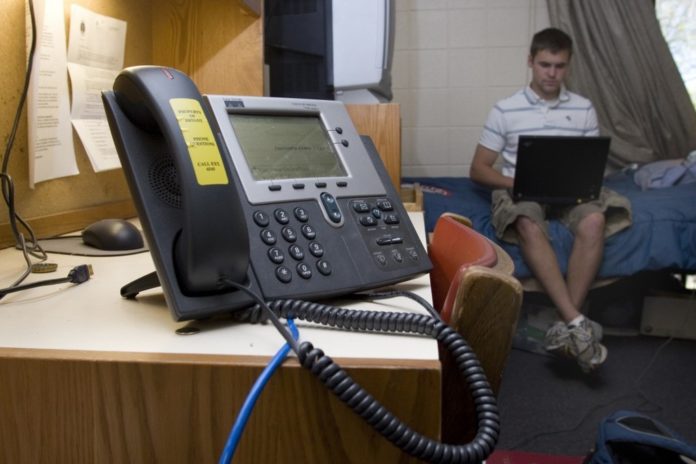
Michael Quinn, director of campus safety and security of Johnson & Wales University’s Providence campus, says high-tech emergency notification systems for college campuses have been “the talk of the universe” since the Virginia Tech shootings.
And even if they’re not the talk of the universe, they are the talk of Rhode Island.
Several local universities are looking into purchasing telecommunication systems that can send emergency messages and instructions to faculty, staff, students and parents of students via voice messages on telephones and cell phones, text messages on cell phones, e-mail and even faxes.
The benefit of the systems is that they can send the messages through various channels to 20,000 people within four to five minutes, said Garry Bozylinsky, vice provost for information technology at the University of Rhode Island.
And the system keeps sending out the messages until it knows they have reached their intended recipients, he said.
Most universities, including URI, Johnson & Wales, Bryant University and others, have some sort of rudimentary emergency notification system that sends a voice message to land-line telephones of faculty, staff and students on campus in addition to e-mail notifications, but those methods can’t reach everyone.
They can’t reach students in transit in real time, which is one reason the high-tech systems have received more attention since the April 16 Virginia Tech incident, in which a student killed 32 other students, then shot himself.
The university was criticized for not being able to notify most students, faculty and staff of the first round of shootings before the second round of shootings occurred two hours later.
Some believe a more sophisticated emergency notification system could have saved lives.
One benefit of such a system is that it can send a message tailored to the emergency at hand, Quinn said. If there were a chemical spill outside, for example, a university could instruct students and faculty to remain indoors and block the areas where air comes in to avoid inhaling chemicals.
If the university had only a simple emergency notification system, such as a siren, students might have the opposite reaction and want to go outside.
But Bozylinsky said having a combination of low- and high-tech solutions is important because sometimes a university might want to sound a siren to prompt students and faculty to listen to their voice mail or view a text message on their cell phones.
Bryant is looking into an even more sophisticated form of campuswide communication that would add external speakers to its existing voice over Internet protocol (VoIP) system for broadcasting emergency messages, said George Coronado, director of public safety at the Smithfield school.
The university purchased the VoIP system four years ago because it wanted to use the money it was paying Verizon Communications for each phone line in students’ dorm rooms on technology that would cost the same but work more efficiently by using data lines, said Art Gloster, vice president of information services at Bryant.
Special VoIP telephones were purchased from Cisco Systems Inc., and the system was installed for $700,000, he said. The university can use the phones to announce emergencies instantly by dialing a number, entering a code and having a person speak into the receiver.
Other kinds of high-tech emergency notification systems cost roughly $2 per head, Bozylinsky said. That means a university with 10,000 students, faculty and staff would spend $20,000 per year.
But the Ocean State Higher Education & Administrative Network (OSHEAN) is working to help offset the cost by negotiating with vendors that could offer the systems to every university in the state at a discounted price based on volume.
Those negotiations aren’t final, said George Loftus, executive director of OSHEAN. But the consortium is looking into supplying training for the system so its 12 higher education members would not have to pay that cost.
Loftus would not release names of the vendors or the product that OSHEAN would make available to its members because the organization is still negotiating. But he did say that one is a major telephone carrier.











